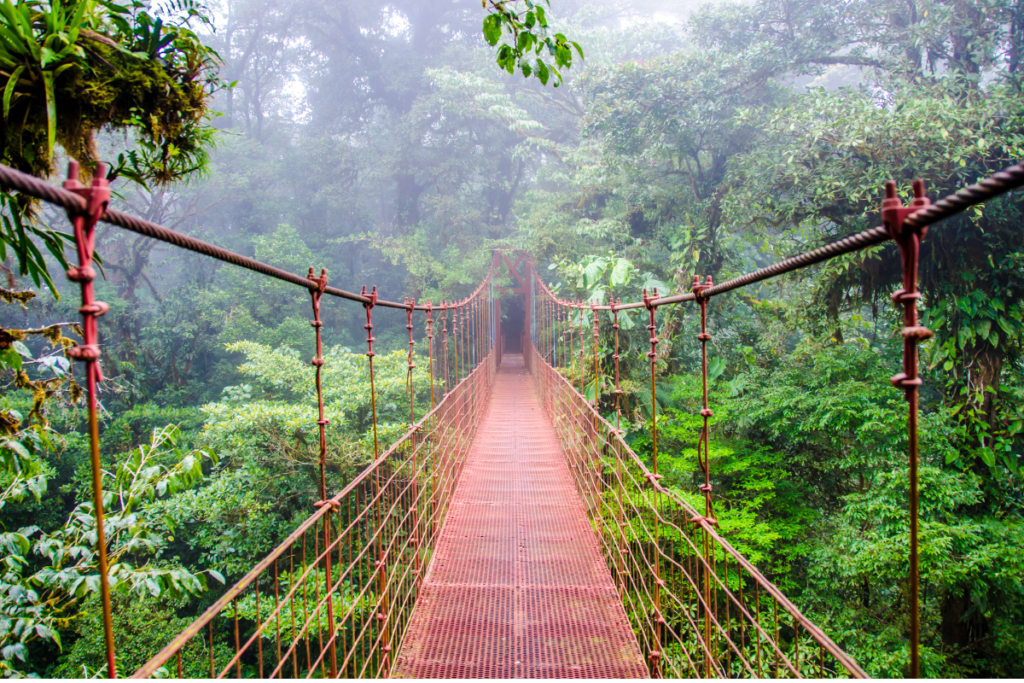When people think of Japan, images of neon-lit cities or cherry blossoms often come to mind. But nestled within this diverse island nation lies something far more ancient and wild—rainforests in japan. From moss-covered cedar trees in Yakushima to the subtropical mangroves of Iriomote, Japan’s rainforests offer an unforgettable experience for eco-conscious travelers.
Table of Contents
ToggleWhether you’re a hiker, wildlife lover, or simply seeking quiet moments in untouched nature, ecotourism in Japan’s rainforests is a path to both adventure and environmental respect.
Unlike the Amazon or Southeast Asian jungles, Japan’s rainforests exist across a wide range of climates—from temperate forests in the north to subtropical jungles in the south. These regions are home to UNESCO World Heritage Sites, endemic wildlife, and some of the oldest trees on Earth.
Most importantly, these forests are deeply tied to Japanese culture, spirituality, and community life, making them not just biodiverse, but sacred.
🌲 What Makes Rainforests in Japan Unique?
🌿 Top Ecotourism Destinations in Japan’s Rainforests
1. Yakushima (屋久島): The Ancient Forest Island
Located off the coast of Kyushu, Yakushima is Japan’s most iconic rainforest destination.
Known for its Jōmon Sugi, a cedar tree estimated to be over 2,000 years old.
Popular eco-activities: guided forest hikes, nature photography, local guesthouse stays.
Yakushima’s misty trails inspired Studio Ghibli’s Princess Mononoke, bringing global awareness to the spiritual beauty of Japan’s rainforests.
2. Amami Ōshima (奄美大島): Where the Jungle Meets the Sea
Part of the Nansei Islands, Amami boasts mangrove forests, coral reefs, and endemic species like the Amami rabbit.
Enjoy kayaking through mangrove tunnels and exploring subtropical rainforest trails.
Designated a UNESCO World Heritage site in 2021, Amami Ōshima has quickly become a rising star among the rainforests in Japan for ecotourism and biodiversity.
3. Iriomote Island (西表島): Japan’s Wildest Rainforest
A remote gem in the Yaeyama Islands, Iriomote is 90% covered in dense jungle.
Home to the endangered Iriomote wildcat, one of the rarest felines in the world.
Ideal for river trekking, waterfall hikes, and sustainable snorkeling.
Community-led ecotours ensure your adventure benefits both nature and locals.
🐾 Wildlife Encounters in the Rainforests in Japan
Japan’s rainforests are living museums of rare and endangered wildlife:
Yaku deer and Japanese macaques roam freely in Yakushima.
Mangrove crabs, kingfishers, and wild boars inhabit Amami’s forests.
The elusive Iriomote cat is a symbol of the biodiversity of the southern rainforests.
Be sure to travel with certified guides who follow ethical wildlife practices—respecting distance, avoiding feeding, and protecting habitats.
⛩️ Cultural and Spiritual Roots of the Rainforests in Japan
In Shintoism, forests are considered sacred spaces where kami (神), or spirits, dwell. Many of Japan’s rainforests are home to ancient shrines and pilgrimage routes, where nature and spirituality blend seamlessly.
Local traditions, especially in Okinawa and Amami, also reflect deep respect for the forest—rituals, festivals, and daily life often revolve around what the rainforest provides.
🏡 Where to Stay: Eco-Friendly Lodges in the Rainforests in Japan
To support ecotourism in Japan, choose eco-lodges, minshuku (民宿, family-run inns), or community-based guesthouses that follow sustainable practices:
Use solar power or local energy
Offer organic or regional foods
Employ local guides and staff
Reinvest in conservation projects
Pro tip: Always ask your accommodation how they support the surrounding rainforest—it’s a great way to connect meaningfully with your stay.
🌏 Eco-Travel Tips for Visiting the Rainforests in Japan
Pack light, leave no trace: Carry reusable water bottles, avoid plastic, and stick to marked trails.
Travel in the shoulder season (May–June, Sept–Oct) to reduce tourist impact.
Join local ecotours to ensure your experience supports environmental education and sustainable development.
Learn basic Japanese eco-terms, such as 環境保護 (kankyō hogo – environmental protection) and 自然体験 (shizen taiken – nature experience), to show respect and understanding.
📌 Final Thoughts
Whether you’re walking beneath ancient cedars in Yakushima, gliding through mangroves in Amami, or listening to the calls of rare birds in Iriomote, Japan’s rainforests offer more than beauty—they offer purpose.
As ecotourism grows, so does the opportunity to experience Japan in a way that is meaningful, respectful, and transformative.
So next time you plan a trip to Japan—why not step off the beaten path and into the heart of the forest?
You might love these too
Let’s Stay Connected!
Our newsletter brings you peaceful places, meaningful traditions, and unseen beauty.
You might love these too
Let’s Stay Connected!
Our newsletter brings you peaceful places, meaningful traditions, and unseen beauty.
You might love these too
Let’s Stay
Connected!
Our newsletter brings you peaceful places, meaningful traditions, and unseen beauty.
